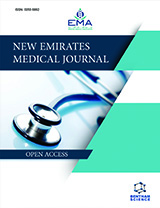Abstract
Background: Pituitary Stalk Interruption Syndrome is a rare midline brain anomaly involving the pituitary gland that leads to a variable degree of pituitary hypofunction with a classic neuroimaging finding of the ectopic posterior pituitary, thin or absent pituitary stalk, and anterior pituitary hypoplasia.
Case Presentation: We present the case of a term newborn who developed encephalopathy and respiratory distress during the neonatal period and was later diagnosed with Pituitary Stalk Interruption Syndrome.
Conclusion: Genetic defects have been identified in 5% of cases, and at times there are associated extra pituitary malformations. In spite of being a welldescribed syndrome, a detailed description of its neonatal presentation and course is lacking in the literature.
Keywords: Neonatal encephalopathy, Pituitary stalk interruption syndrome, Ectopic posterior pituitary gland, Combined pituitary hormone deficiency, Central hypothyroidism, Growth hormone deficiency
[http://dx.doi.org/10.1111/jne.12451] [PMID: 27917547]
[http://dx.doi.org/10.1530/EJE-19-0168]
[http://dx.doi.org/10.1371/journal.pone.0142354] [PMID: 26562670]
[http://dx.doi.org/10.1542/pir.2015-0081]
[http://dx.doi.org/10.4183/aeb.2017.96] [PMID: 31149155]
[http://dx.doi.org/10.1111/j.1365-2265.2008.03236.x]
[http://dx.doi.org/10.1203/00006450-199510000-00007] [PMID: 8559602]
[http://dx.doi.org/10.1097/MCC.0b013e32818a6d74] [PMID: 17599004]
[http://dx.doi.org/10.4274/2Fjcrpe.galenos.2019.2019.0086]





























